
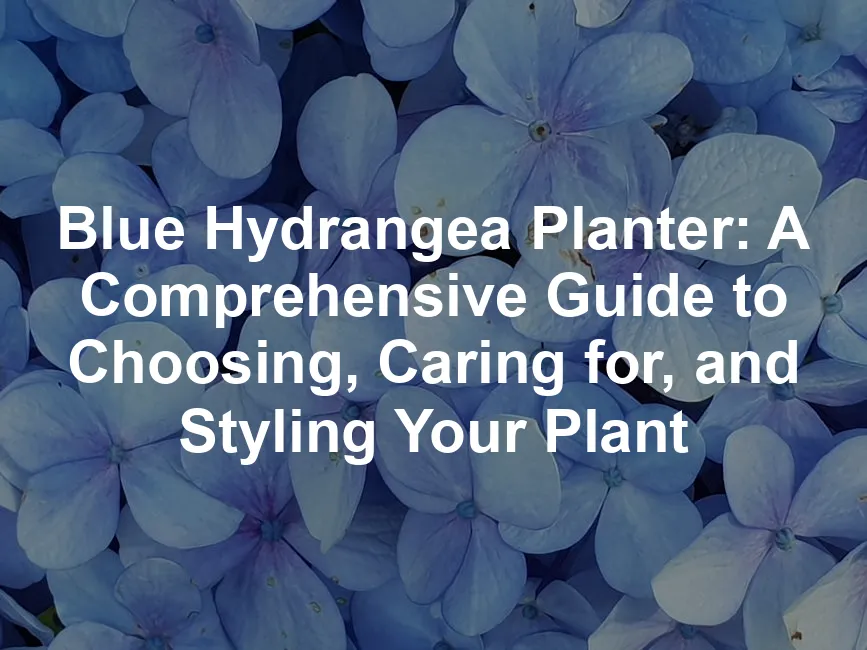
Blue Hydrangea Planter: A Comprehensive Guide to Choosing, Caring for, and Styling Your Plant
Introduction
Blue hydrangeas are stunning plants that capture attention. Their vibrant blooms bring joy and elegance to any space. This guide will help you choose, care for, and style your blue hydrangea planter. Whether you’re a novice or a seasoned plant lover, you’ll find valuable insights here.
Speaking of vibrant blooms, why not consider adding a Blue Hydrangea Plant to your collection? They’re like the life of the garden party, always ready to steal the show!

Summary and Overview
A blue hydrangea planter is a delightful addition to home and garden decor. These plants are popular for their stunning blue flowers and lush green foliage. Blue hydrangeas thrive in summer and early fall, offering a burst of color when many other plants are fading. They are relatively low-maintenance, needing just the right amount of sunlight and water.
When placed indoors or outdoors, these planters can easily enhance your decor style. You can find them in various settings, from cozy living rooms to vibrant garden beds. With proper care, blue hydrangeas can flourish, making them a favorite choice for plant enthusiasts.
Now, to keep those hydrangeas looking fabulous, you might want to invest in a Ceramic Planter Pot. Not only does it look chic, but it also keeps the roots happy with its excellent drainage capabilities!
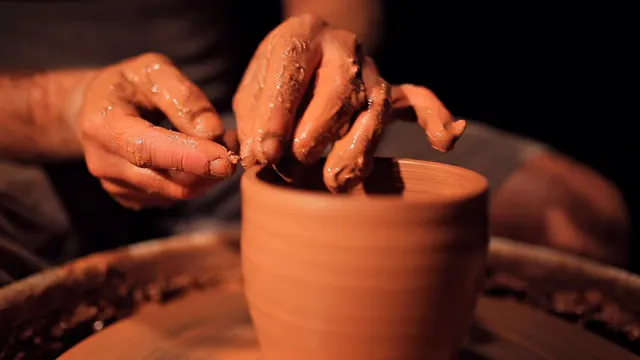
Selecting the Perfect Blue Hydrangea Planter
Understanding Hydrangea Varieties
Hydrangeas come in multiple varieties, each with unique features. The most sought-after type is the blue hydrangea, known for its stunning color. These plants can change hue based on soil pH levels. Acidic soils typically produce vibrant blue blooms, while alkaline conditions lead to pink flowers.
Popular blue varieties include the Endless Summer and Nikko Blue. Each has its own growth habits and bloom sizes. When selecting a hydrangea, consider your local climate and the space it will occupy. Choosing the right variety ensures a successful and beautiful planting experience.
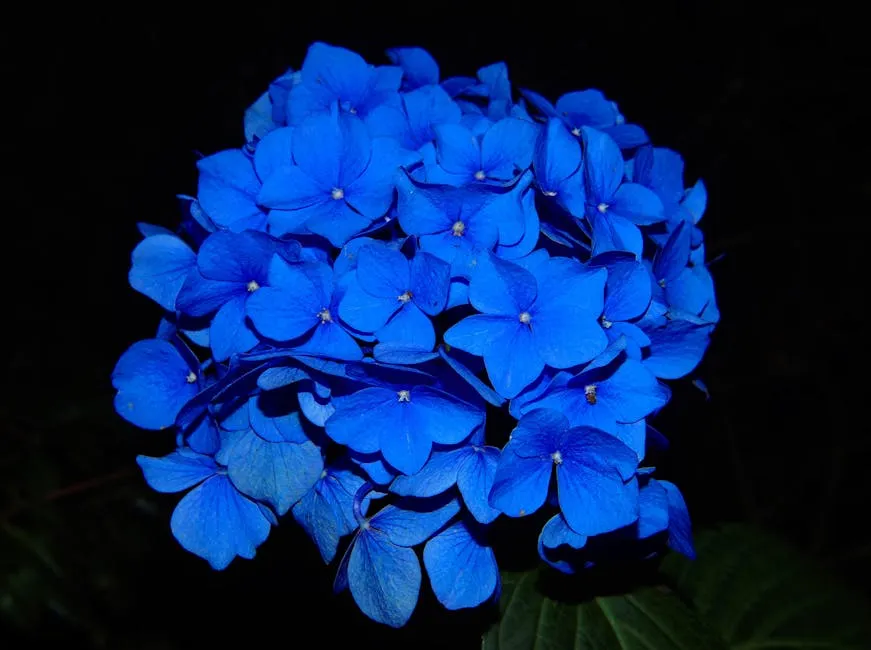
Choosing the Right Container
When selecting a container for your blue hydrangea, consider materials like ceramic and wicker. Ceramic pots are durable and come in various colors and designs. Wicker, on the other hand, adds a natural touch to your decor. If you’re going for that cozy vibe, check out a Wicker Planter Basket that can really bring a rustic charm!
Ensure your planter has adequate drainage holes. Hydrangeas dislike sitting in water, as it can lead to root rot. Choose a size that allows the roots to grow comfortably, ideally a pot that’s at least 12 inches wide.
Matching your planter with home decor is key. If your space is modern, opt for sleek ceramic designs. For a rustic feel, try natural wicker or terracotta. Think about colors too; a vibrant blue hydrangea looks stunning against a neutral container. By carefully choosing the right planter, you’ll enhance both the beauty of your hydrangea and your home’s aesthetic.

Care and Maintenance of Your Blue Hydrangea Planter
Watering and Sunlight Requirements
Blue hydrangeas thrive on consistent watering. Aim for deep watering once a week, especially during hot months. If the leaves start to droop or become crispy, it’s a sign of under-watering. Conversely, yellowing leaves may indicate over-watering.
These plants prefer bright, indirect sunlight. A spot with morning sun and afternoon shade works well. Too much direct sunlight can scorch the leaves, while too little light may hinder blooming. Observe your plant and adjust its location as needed. By following these guidelines, you’ll help your blue hydrangea flourish beautifully.
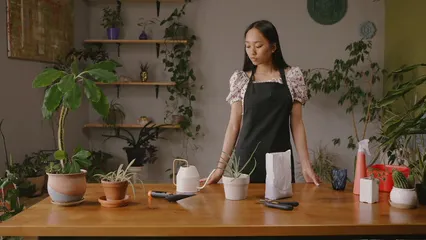
Fertilization and Soil Needs
To nourish your blue hydrangea, use a balanced fertilizer. A Slow-Release Fertilizer works wonders, providing nutrients throughout the growing season. Apply it every 6-8 weeks during spring and summer for optimal results.
Soil pH greatly impacts bloom color. Aim for a pH between 5.2 and 5.5 for vibrant blue flowers; add sulfur to acidify the soil if needed. Alternatively, alkaline soils can shift blooms to pink. Regularly testing your soil ensures you maintain the right conditions for stunning blooms. With the right care, your blue hydrangeas will thrive and enchant all who see them.
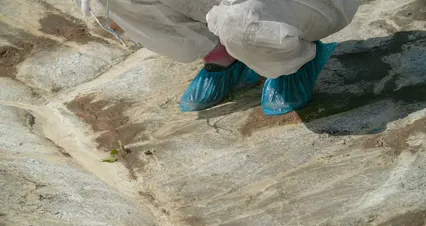
Understanding how to test and adjust soil pH is crucial for the health of your plants. Check out this guide on soil pH testing and adjustment for optimal plant growth.
Pruning and Seasonal Care
Pruning blue hydrangeas is essential for healthy growth. The best time to prune is late winter or early spring. Remove dead or damaged stems first. Then, cut back one-third of the oldest stems to promote new growth. This encourages fuller blooms in the summer.
Seasonal care is vital too. In spring, apply a balanced fertilizer to support growth. Keep an eye on watering, especially during dry spells. Blue hydrangeas enjoy moist soil but dislike standing water. During summer, provide some afternoon shade to prevent wilting. In fall, remove spent blooms to tidy up your planter.
Finally, protect your hydrangeas in winter. Cover the roots with mulch for winter protection to insulate against frost. With these simple steps, your blue hydrangeas will thrive and reward you with vibrant blooms year after year.

Styling Your Blue Hydrangea Planter
Indoor Decor Ideas
Blue hydrangeas can brighten any indoor space. Start by placing your planter in a well-lit area, like a sunny windowsill. The vibrant blue complements various styles, from modern to rustic. Consider grouping them with other plants for a lush display.
Another idea is to use your blue hydrangea as a centerpiece on a dining table. This adds a pop of color and elegance to meal times. You can also place them in entryways or living rooms for an inviting atmosphere.
For a unique touch, choose a decorative pot that matches your decor. Wicker or ceramic containers can enhance the beauty of your hydrangeas. Don’t forget to rotate your planter occasionally, ensuring all sides receive equal light. With these tips, your indoor decor will shine with the allure of blue hydrangeas.
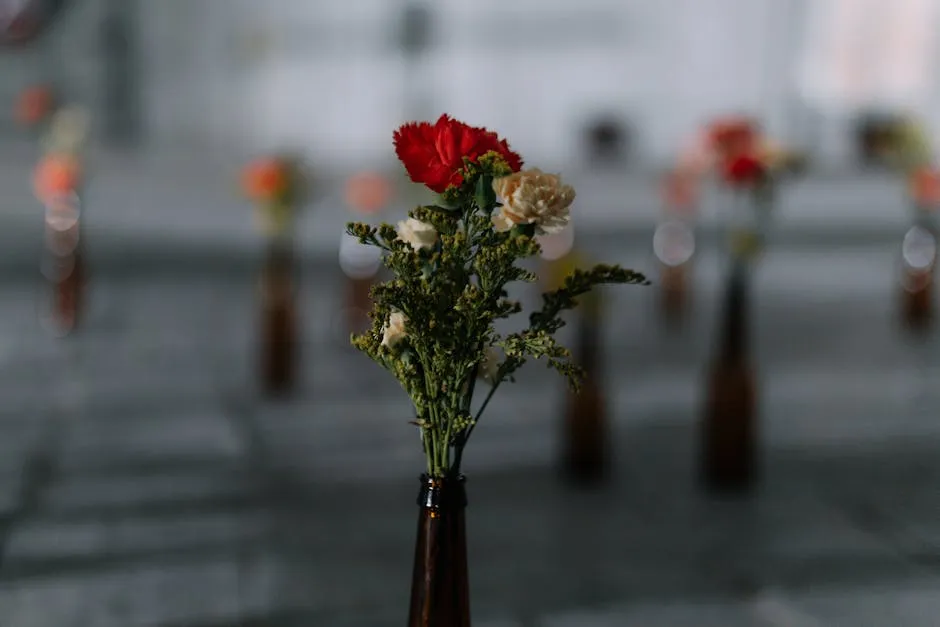
Outdoor Garden Arrangements
In outdoor spaces, blue hydrangeas can transform your garden. These plants work beautifully in borders or as focal points. Pair them with companion plants like companion plant seeds (Hostas, Ferns), which thrive in similar conditions.
For a stunning arrangement, consider planting them in clusters. This creates a visual impact and allows their colors to pop. You can also mix them with white or pink flowers for a lovely contrast.
If you have a patio or deck, place your blue hydrangea planter there. It adds charm and beauty to outdoor gatherings. Ensure they receive morning sun and afternoon shade, especially in hotter months. With thoughtful arrangements, your garden will be a vibrant oasis filled with the beauty of blue hydrangeas.
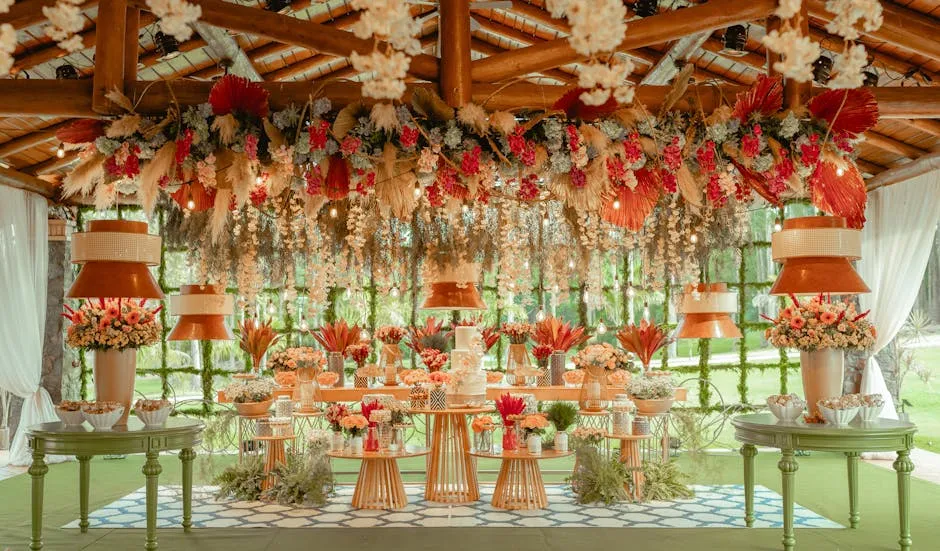
Troubleshooting Common Issues
Pest Management
Hydrangeas can attract several pests. Aphids, spider mites, and whiteflies are common culprits. They suck sap from the leaves, leading to wilting and discoloration.
To manage these pests, inspect your plants regularly. If you spot any, you can wash them off with a strong spray of water. Insecticidal soap spray is effective too. It’s safe and can eliminate many pests without harming your plant.
For prevention, keep your garden clean. Remove debris and fallen leaves where pests can hide. Encourage beneficial insects like ladybugs, which feast on harmful pests. Regularly check for signs of trouble to keep your hydrangeas healthy and thriving.
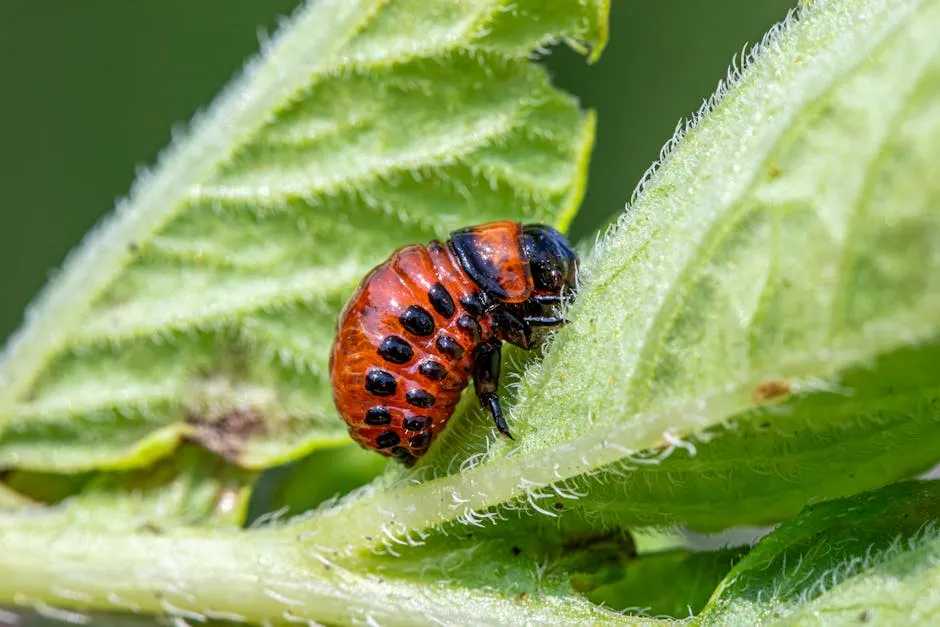
Addressing Plant Diseases
Blue hydrangeas are susceptible to diseases like powdery mildew, root rot, and leaf spot. Powdery mildew presents as a white, powdery coating on leaves. Root rot often results from overwatering, leading to wilting and yellowing leaves. Leaf spot appears as dark spots on foliage, which can eventually cause leaves to drop.
For treatment, remove any affected leaves immediately. Ensure proper air circulation around your plants to prevent powdery mildew. If you suspect root rot, check the roots and trim away any mushy parts. Allow the plant to dry out before watering again.
To prevent these diseases, ensure your hydrangeas are planted in well-draining soil. Avoid overcrowding plants, as this can trap moisture. Regularly inspect your plants and maintain good hygiene in your garden for healthier blue hydrangeas.
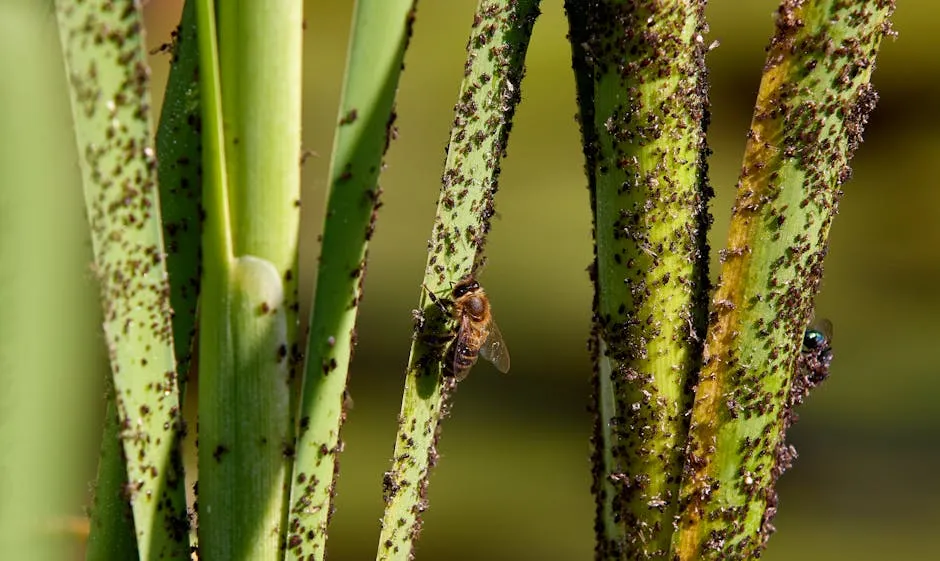
For effective treatment of common plant diseases, consider exploring Natural remedies for common plant diseases.
Conclusion
Blue hydrangeas are a captivating choice for any planter. Their rich color and lush blooms elevate both indoor and outdoor spaces. By incorporating these plants into your home or garden, you’ll enjoy their beauty for years.
Remember, proper care is essential. This will not only enhance their appearance but also prolong their life. So, why not add some blue hydrangeas to your collection today? They’re sure to brighten up your environment!
And while you’re at it, consider grabbing a Garden Pruning Shears. They’re the secret weapon for keeping your hydrangeas in tip-top shape!

FAQs
What is the best soil for blue hydrangeas?
Blue hydrangeas thrive in well-draining soil rich in nutrients. Aim for a slightly acidic to neutral pH, ideally between 5.2 and 5.5. This range enhances the plant’s ability to absorb essential nutrients. Adding organic matter, such as compost, can help improve soil structure and fertility. Regularly test the soil pH to maintain the right conditions for vibrant blooms.
How often should I water my blue hydrangea planter?
Water your blue hydrangea planter deeply once a week. During hot summer months, check the soil moisture more frequently. If the leaves droop, it may need water. In cooler months, reduce frequency but ensure the soil remains moist. Remember to avoid over-watering, as this can cause root rot. Proper watering is key to healthy growth.
Can blue hydrangeas be grown indoors?
Yes, blue hydrangeas can flourish indoors with the right conditions. Place them in a bright spot with indirect sunlight. They prefer temperatures between 60-70°F. Ensure the pot has good drainage to prevent excess moisture. Regularly check the soil, keeping it consistently moist. With care, indoor blue hydrangeas can thrive and bring color to your living space.
How do I change the color of my hydrangeas?
To change the color of your hydrangeas, adjust the soil pH. For blue blooms, keep the soil acidic by adding sulfur or aluminum sulfate. If you want pink flowers, raise the pH by adding lime. These amendments affect the plant’s ability to absorb aluminum, which influences color. Monitor changes and adjust as needed for the desired hue.
What are the best companion plants for blue hydrangeas?
Pair blue hydrangeas with companion plants that thrive in similar conditions. Hostas, ferns, and astilbes complement their lush foliage beautifully. Consider planting alongside daylilies or astilbe for vibrant contrasts. These plants not only enhance aesthetics but also create a harmonious garden environment. By selecting compatible companions, you can elevate your garden’s charm.
And don’t forget, a Soil pH Test Kit can be a gardener’s best friend. It’s like having a personal plant doctor at your disposal!
Please let us know what you think about our content by leaving a comment down below!
Thank you for reading till here 🙂
All images from Pexels



